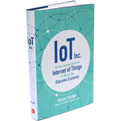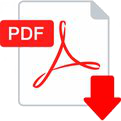
PE AI BOOK
Using Artificial Intelligence for Value Creation
A TIMELY, ESSENTIAL GUIDE TO UNDERSTANDING AND COMMERCIALIZING ARTIFICIAL INTELLIGENCE IN ANY SECTOR
THIS IS HOW AI IS RESHAPING PRIVATE EQUITY
ChatGPT. Autonomous vehicles. Predictive maintenance. Artificial intelligence is no longer some futuristic promise. It’s here, reshaping every sector and redefining competitive edge. While some companies dabble in AI prompting and engineering projects, few know how to systematically apply PE AI to create measurable value.
Far from theoretical, The PE AI Operating Partner is a practical how-to guide written for private equity professionals, executives and service providers who want to harness AI to generate alpha. Clear and concise, it shows how to bridge the gap between AI and enterprise value creation.
But what exactly is private equity AI?
Bruce Sinclair—a former AI CEO and PE operating partner—shares his original playbook and first-principles thinking to help you:
- Identify and mitigate AI risk
- Develop your AI strategy and quantify its financial impact
- Apply AI value levers to create value
The PE AI Operating Partner equips you with just enough AI literacy to confidently engage boards, leadership teams and technical partners. Not to code, but to lead—so your firm can act decisively where others hesitate. With this book you’ll see opportunities invisible to your competitors, bid higher with conviction, boost portfolio performance in novel ways and sidestep the rookie mistakes that trip up others.
AI is not just for tech companies anymore. It’s for every business, in every industry. With the right strategy, it becomes your competitive edge, and this book shows you how to wield it.

YOUR BIGGEST PE AI QUESTIONS ANSWERED

BOOK OUTLINE
Sandwiched between the Introduction: What’s the Deal With AI, and the Conclusion: Getting Started, are the three parts of the book.
PART 1: STRATEGIC AI VALUE CREATION
This part of the book bridges value creation and risk assessment with strategy. It starts with the first principles of applying what AI can do to answer the biggest of questions: “How do I create value with AI?”, “How to I identify AI risk”, and ultimately, “How do I develop my AI strategy?” It includes AI ability examples and a detailed client case study.
CHAPTER 1: FIRST PRINCIPLES OF APPLIED AI
- ATOMIC AI ABILITIES
- AI ABILITIES “PERIODIC TABLE”
- USING AI ABILITIES
CHAPTER 2: THE AI VALUE CREATION FRAMEWORK
- USING THE FRAMEWORK STEP BY STEP
- VALUE CREATION FRAMEWORK CASE STUDY
CHAPTER 3: AI RISK ASSESSMENT
- AI RISK IDENTIFICATION
- RISK ASSESSMENT EXAMPLE
- SPONSOR RISK
CHAPTER 4: DEVELOPING AI STRATEGY
- STRATEGY DEVELOPMENT
- AI IMPACT
CHAPTER 5: AI APPLICATIONS AND AGENTS
- THE DIGITAL TWIN
- SYSTEM INTEGRATION
PART 2: AI VALUE DRIVERS
This part of the book bridges value creation with finance. It goes through each of the 10 AI value drivers to demonstrate another way to imagine value creation. This approach starts by classifying value as growth, cost reduction or multiple expansion, enabling us to answer the question, “How do I quantify AI value?” Included are reusable client case studies for each value driver.
CHAPTER 6: QUANTIFYING AI VALUE
- FINANCIAL IMPACT
- VALUE BRIDGE
CHAPTER 7: REVENUE GROWTH OPPORTUNITIES
- MARKET SHARE EXPANSION
- CUSTOMER EXPANSION
- PRODUCT EXPANSION
- MARKET EXPANSION
- CUSTOMER RETENTION
- PRICING OPTIMIZATION
CHAPTER 8: COST REDUCTION OPPORTUNITIES
- MARGIN IMPROVEMENT
- OPERATING EFFICIENCY
CHAPTER 9: MULTIPLE EXPANSION OPPORTUNITIES
- ADD-ON ACQUISITIONS
- MULTIPLE RERATE
PART 3: EXECUTING AI STRATEGY
This is the techie part of the book. It answers the question, “How do I execute my AI strategy?”, by introducing the AI Tech Stack. It then shows how the AI requirements doc is used to communicate exactly what needs to be developed by the tech team, bridging the age-old chasm between strategy and execution. It ends with a detailed example showing the math and tech of AI.
CHAPTER 10: THE AI TECH STACK
- AI MODEL
- DATA
- SOFTWARE
- HARDWARE
- TECH STACK EXAMPLE
- THE AI REQUIREMENTS DOC
RELEASE DATE
The book will be released November 1.
BRUCE’S OTHER BOOKS AND TRAINING
Bruce is also the author of the McGraw-Hill published book, IoT Inc, and the book, Digital Operating Partner. His training courses on the digital transformation and the internet of things on LinkedIn Learning have certified over 300,000 professionals online.

NEW PODCAST INTERVIEW DISCUSSING BOOK
Listen to this comprehensive podcast interview with Middle Market Growth Conversations where many of the books most important takes are discussed.
Go the the ACG podcast page to see the podcast in its home and to read the full transcript of the conversation.







